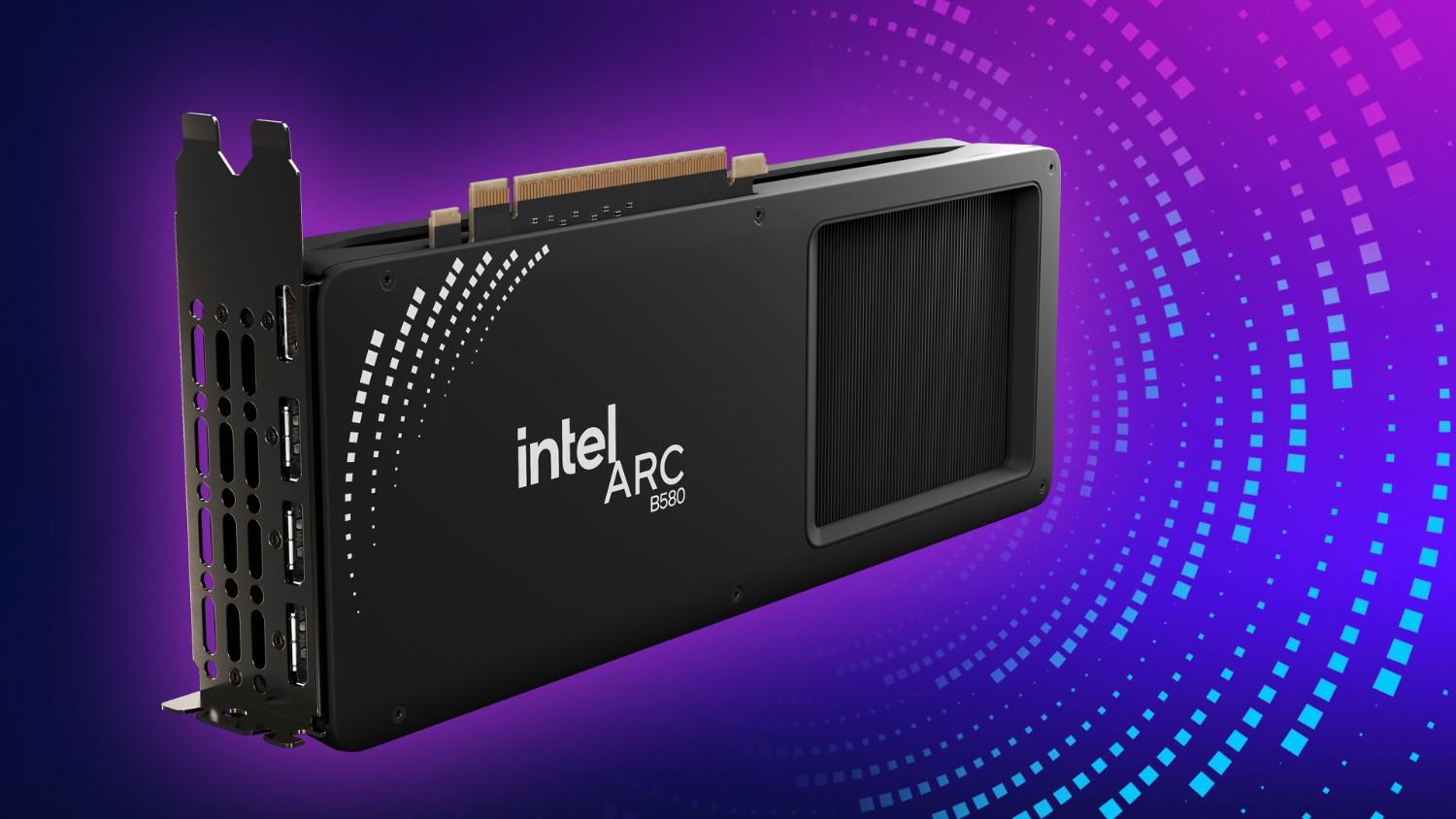Intel has been a significant name in the computing world for decades, but when it comes to graphics cards, the landscape has long been dominated by NVIDIA and AMD. Enter the Intel Arc B580—a card that aims to disrupt this duopoly and offer gamers an alternative worth considering. The Sparkle OC version of the Arc B580 has garnered attention for its performance and design. Let’s take a comprehensive look at this card, its real-world performance across 15 games, and its potential as a mid-range powerhouse.
Design and Build Quality: A Visual and Functional Treat
The Sparkle OC version of the Intel Arc B580 is as much about aesthetics as it is about performance. Featuring a sleek backplate, a robust triple-fan cooling setup, and an anti-sag kit, this card is designed to impress. It’s not just about looks, though. The triple-fan system ensures efficient cooling, keeping the card quiet even under load. Reviewers noted the absence of coil whine, which is a welcome relief for gamers tired of noisy GPUs.This combination of style and functionality makes the Arc B580 Sparkle OC a strong contender for gamers looking to build a rig that performs well and looks good doing it.
Testing Methodology: Setting the Stage
To evaluate the Arc B580’s capabilities, the reviewer ran tests at 1080p—a resolution ideal for this card. Two processor setups were used:
- Intel i9 Processor: Capped at 125 watts to simulate the performance level of an i7-14700K, providing insight into how the card performs with high-end CPUs.
- Intel i5-12400F Processor: A mid-tier CPU, which revealed potential bottlenecks in certain scenarios.
Resizable BAR (ReBAR) was enabled throughout the tests. This technology, crucial for optimizing the card’s performance, ensures efficient data transfer between the CPU and GPU—a must for modern gaming systems.
Performance Across 15 Games: A Closer Look
Apex Legends:
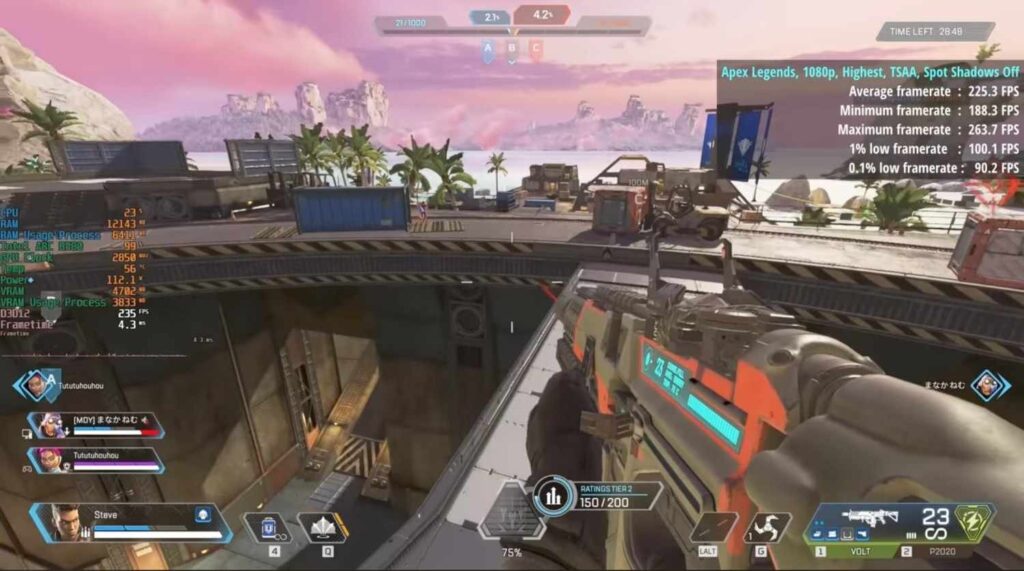
Initially, the game presented some challenges when using the DirectX 11 (DX11) API, with the game running in an unstable manner. However, the performance dramatically improved by switching to DirectX 12 (DX12), providing a smooth gaming experience at the highest settings, except for spot shadows, which were disabled. This highlights the importance of using the correct API with Intel Arc cards. The game ran well with Temporal Anti-Aliasing (TSAA) enabled and at 100% resolution scaling.
Baldur’s Gate 3:
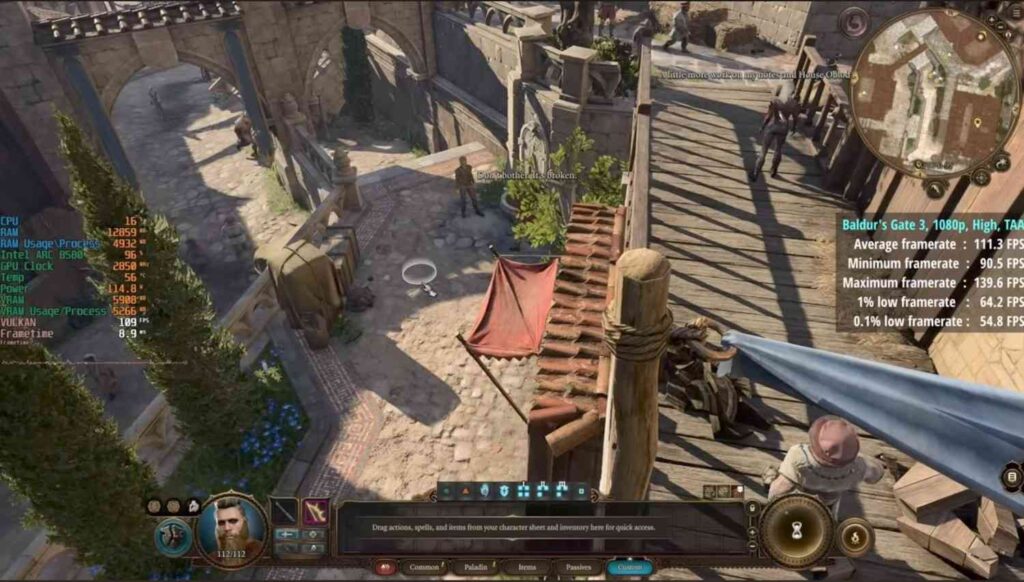
This game delivered a very consistent experience with the highest settings enabled (with depth of field disabled). The average frame rate was 111 FPS, with a 1% low of 64 and a 0.1% low of 55. The game ran smoothly and looked good at these settings, demonstrating the card’s capability to handle demanding single-player titles effectively.
Black Myth Wukong:
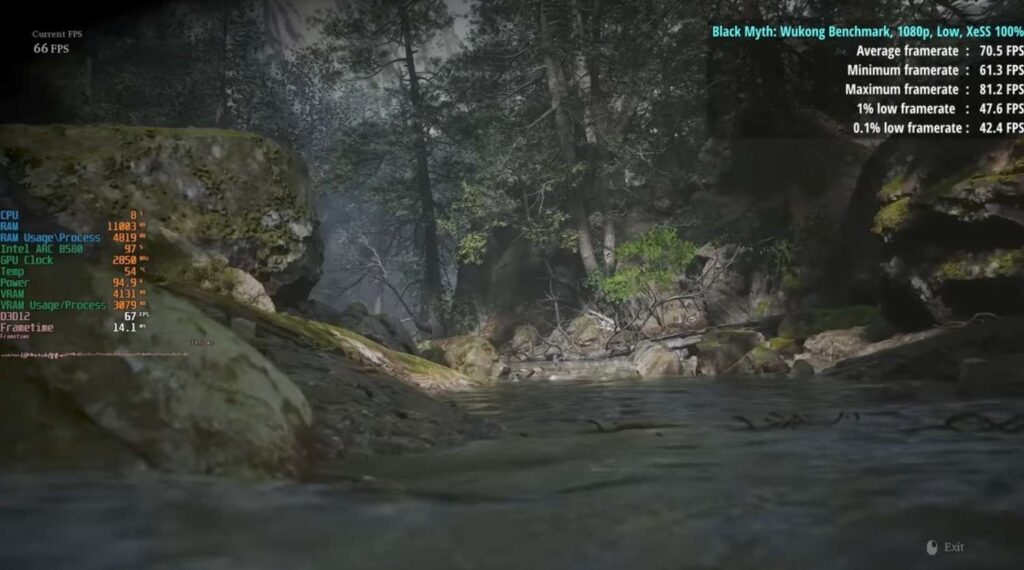
Due to the game’s demanding nature, it was necessary to use the low graphics preset to achieve playable frame rates. Even on low, the game averaged 71 FPS with some dips to 48 and 42 for the 1% and 0.1% lows respectively. Enabling Xe Super Sampling (XESS) and setting the resolution to 80% improved the average frame rate to 82 FPS, but the 1% and 0.1% lows were not significantly improved. This shows that some of the most demanding new games will require settings to be lowered to achieve smooth frame rates on this card.
Counter-Strike 2:
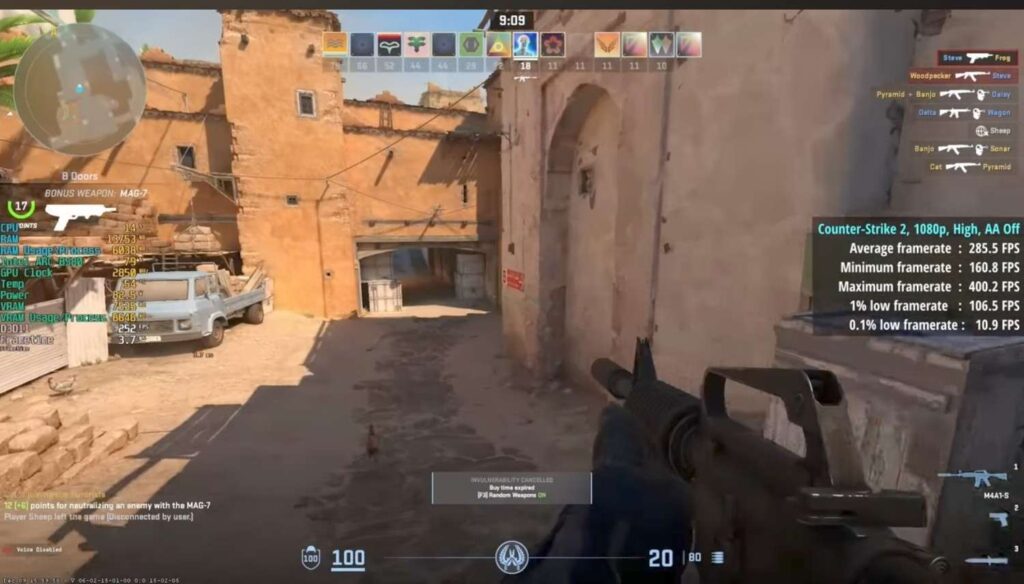
This online competitive shooter performed surprisingly well at high settings, with no issues. MSAA was disabled as it is intensive, but the game ran with a good frame rate. The game uses around 7GB of video memory (VRAM), highlighting the usefulness of the 12GB of VRAM available on this card. This is beneficial for those who want to play with higher settings on this card.
Elden Ring:
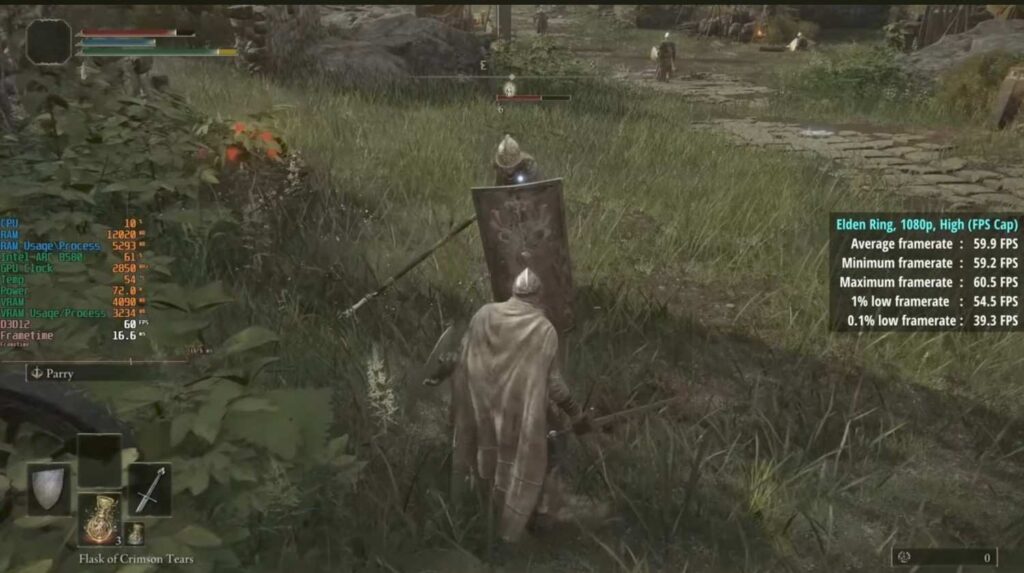
This game is capped at 60 FPS by default, and the Intel Arc B580 had no problem maintaining this. The performance was smooth, and the card wasn’t being fully utilized, due to the cap. The 1% low was 55, and the 0.1% low was 49.
Forza Horizon 4:
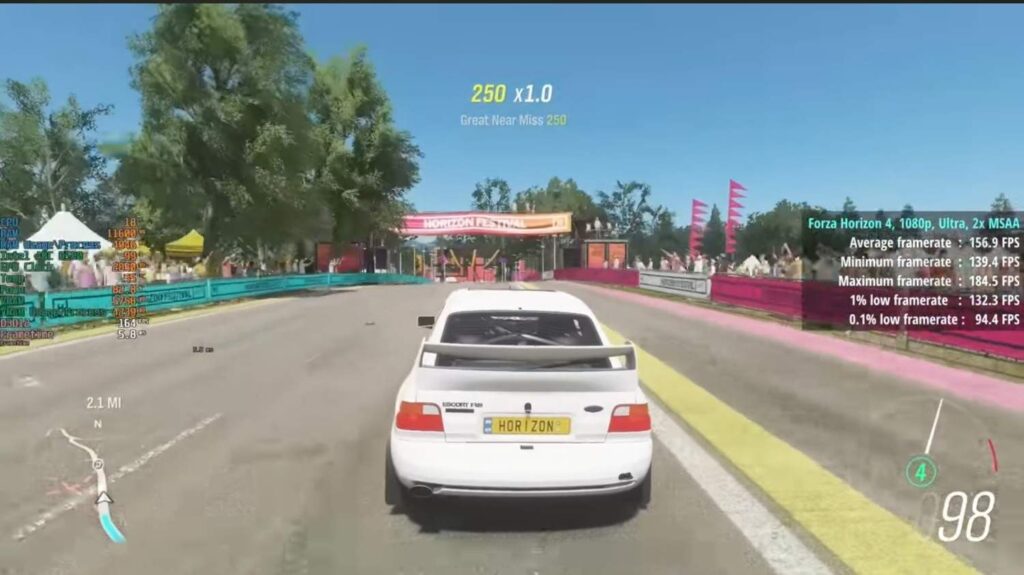
The game ran exceptionally well at ultra settings with 2x MSAA, achieving an average frame rate of 157 FPS, with 1% and 0.1% lows of 132 and 94 FPS, respectively. The card was fully utilized, and the GPU clock reached 2850 MHz. The reviewer noted that there wasn’t much of a performance difference between the Sparkle OC version and the limited edition card.
Grand Theft Auto 5 (GTA 5):
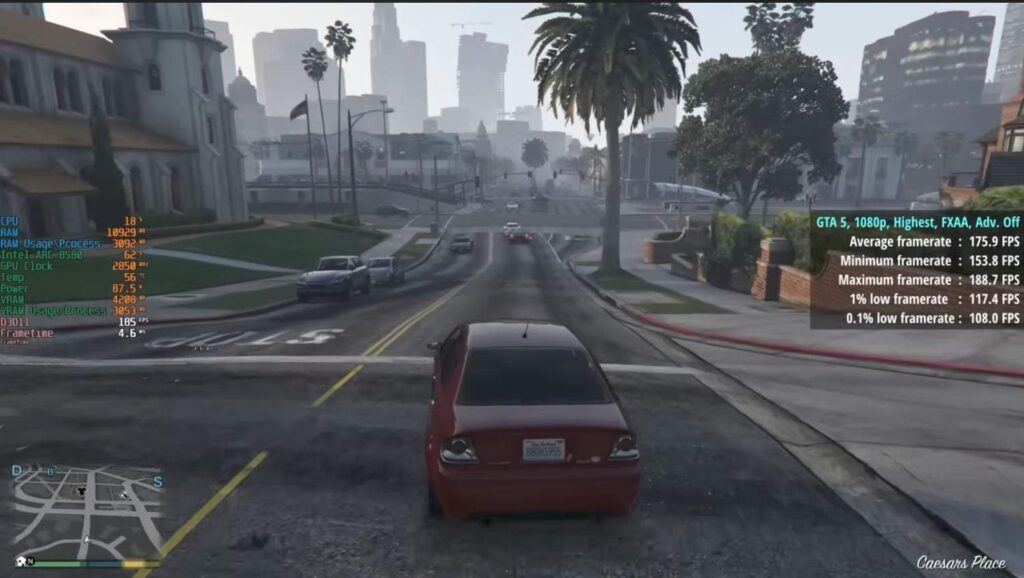
Using the DX11 API, the game ran smoothly at the highest settings with FXAA enabled, instead of MSAA. The card was not fully utilized in this game, hovering between 55 and 60%, but the GPU clock speed remained at 2850 MHz. This shows a substantial improvement compared to previous-generation Arc cards, which had more issues with this game.
Half-Life 2:
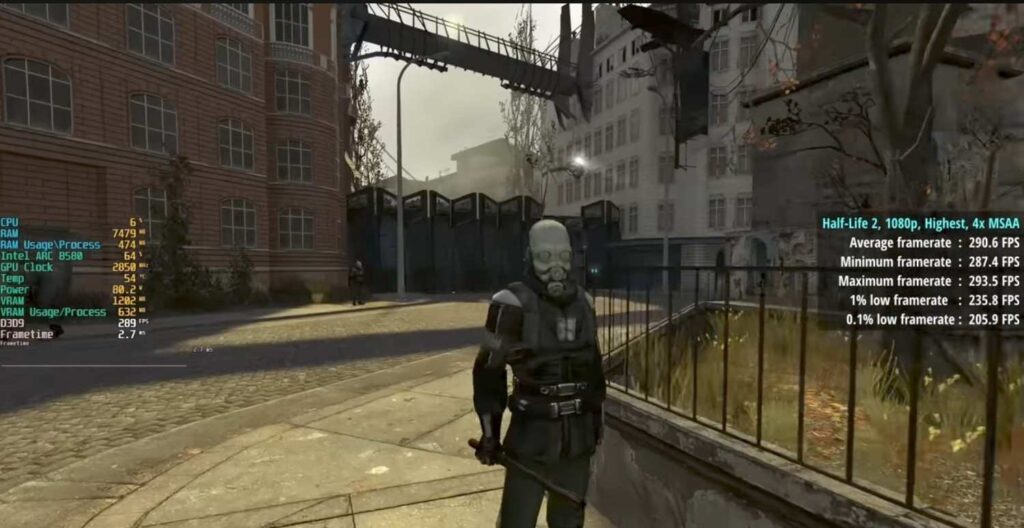
This older game, running on the DX9 API, performed very well, averaging 291 FPS with very smooth frame rates. The 1% and 0.1% low frame rates were 236 and 206 FPS respectively, indicating a very consistent experience. This indicates that the updated drivers have fixed the previous issues that Arc cards had with DX9 titles.
The Witcher 3:
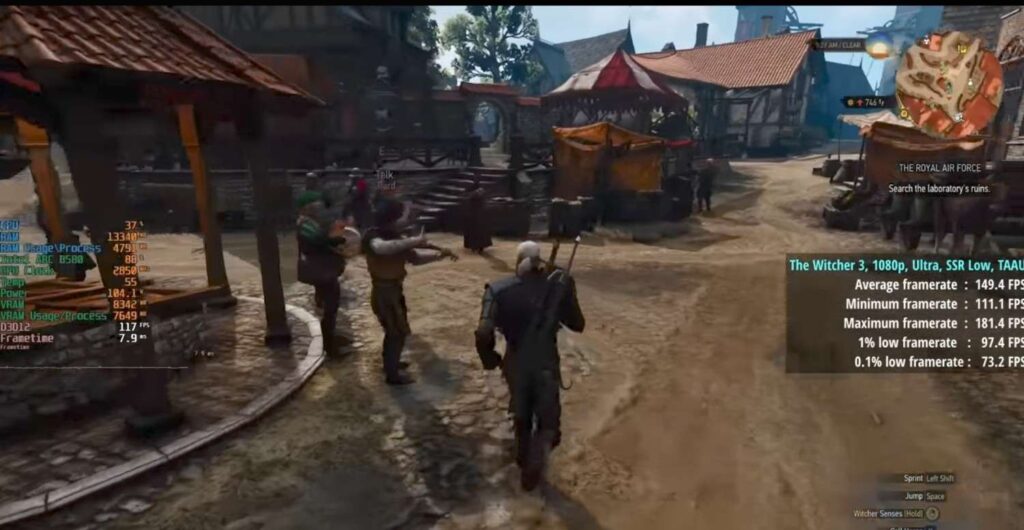
Initially, with ultra settings, Screen Space Reflections set to low, and TAA enabled, the game averaged 149 FPS with good frame time consistency. However, when ray tracing was enabled along with XESS set to quality mode, the average frame rate dropped to 67 FPS, and the 1% and 0.1% lows became inconsistent. The game also allocated nearly 10GB of VRAM, suggesting that the 12GB of VRAM is beneficial when using higher settings in this game. It is recommended to avoid ray tracing on this card, as it is a significant performance hit.
Fortnite:
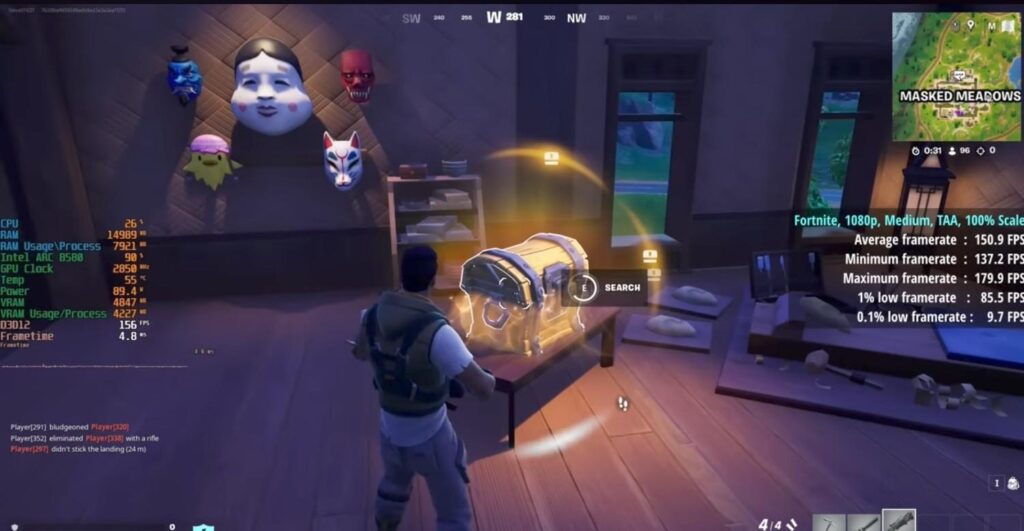
The game performed very well using the DX12 API, achieving over 150 FPS with smooth frame times. The 1% low was 86 and the 0.1% low was 10, but these dips were likely caused when the player jumped from the bus at the beginning of the game. Using DX11, the game ran with more stutter, showing that DX12 is the better API for this game on the Arc cards.
Red Dead Redemption 2:
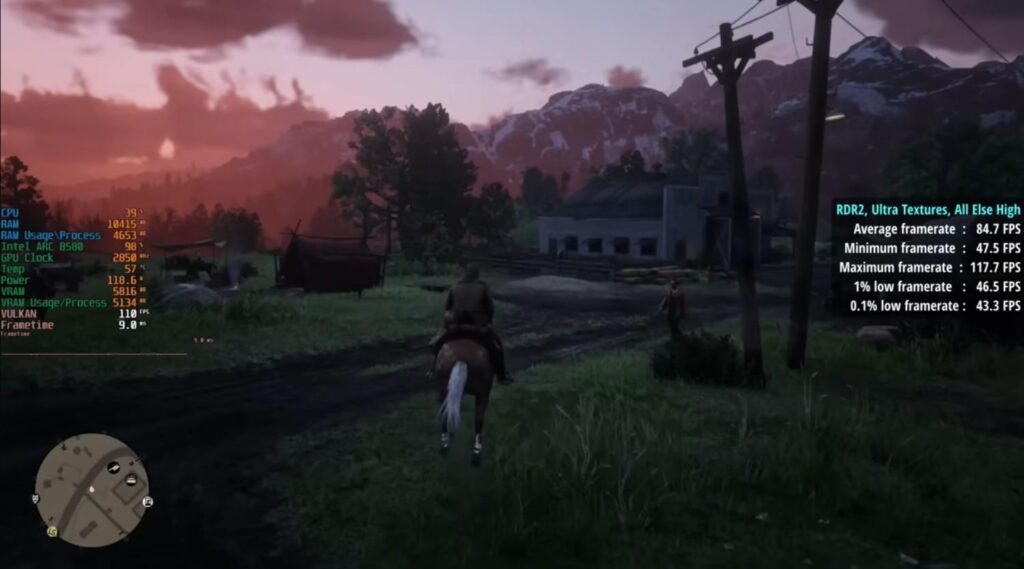
With ultra textures and high settings (the same settings used with an NVIDIA 4060), the game performed well, achieving frame rates of 100 FPS around Valentine. However, when moving into the town, the GPU clock speed would drop from its maximum, resulting in lower frame rates. The reason for this clock speed drop is unknown, but the reviewer speculates that it could be something to do with using Windows 10. This issue was not seen when using an NVIDIA 4060 card.
Cyberpunk 2077:
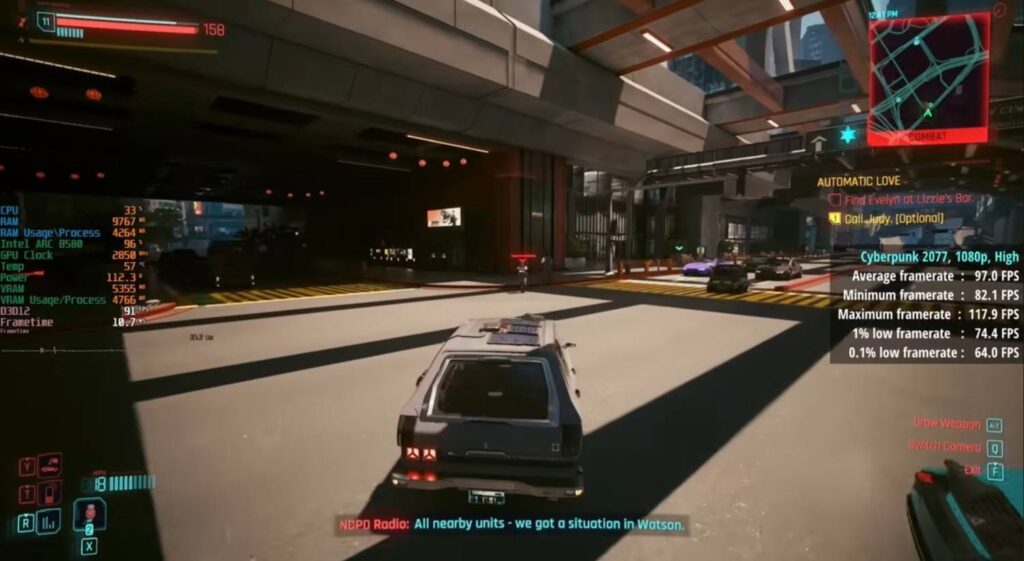
The game ran smoothly using high settings with high crowd density and textures, with the card being fully utilized and running cool at under 60 degrees Celsius. The triple fan cooler on the Sparkle OC card kept the card running quietly.
Indiana Jones and the Great Circle:
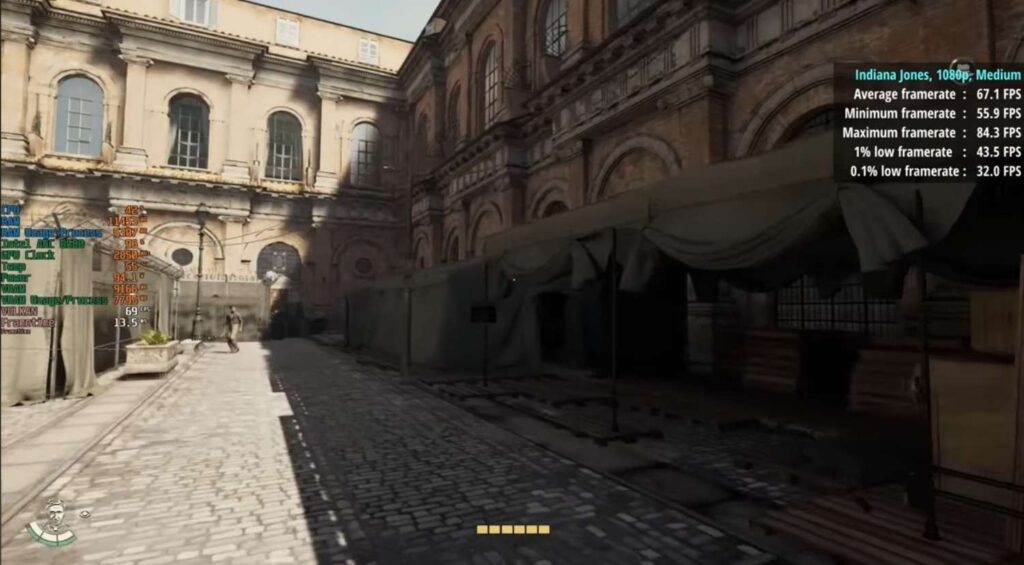
This demanding title ran at an average of 67 FPS on medium settings, but with some noticeable dips and drops in more intensive scenes, with 1% and 0.1% lows of 44 and 32 FPS respectively. This game is a “performance hog”, and the reviewer decided to keep the game at its native resolution for the purposes of the video.
Stalker 2:
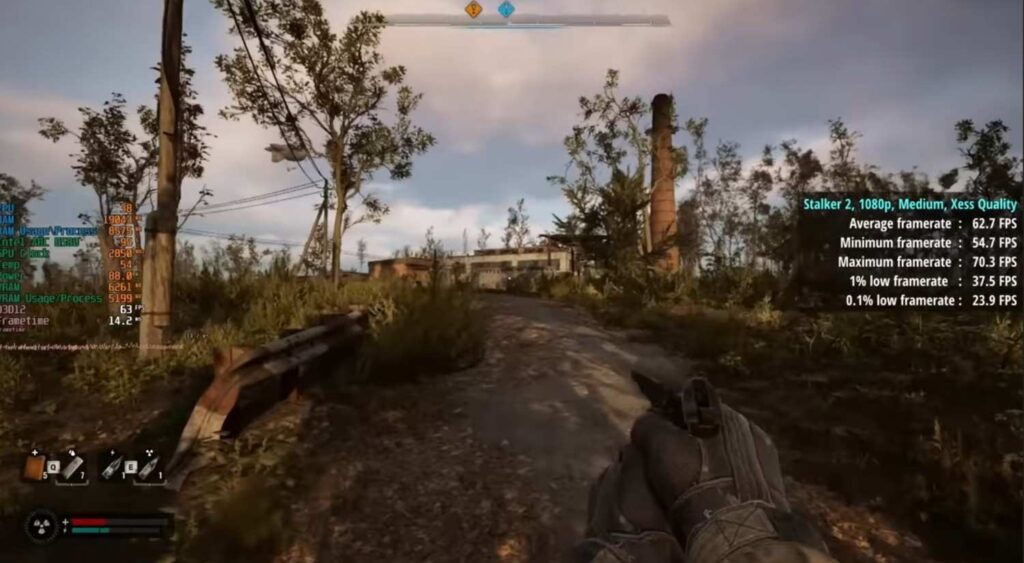
To achieve at least 60 FPS, it was necessary to enable XESS when using medium settings. The game averaged around 63 FPS, but there were still some dips and drops. The reviewer stated that they had to make the same kind of settings sacrifices as they would with the 4060.
Call of Duty Black Ops 6:
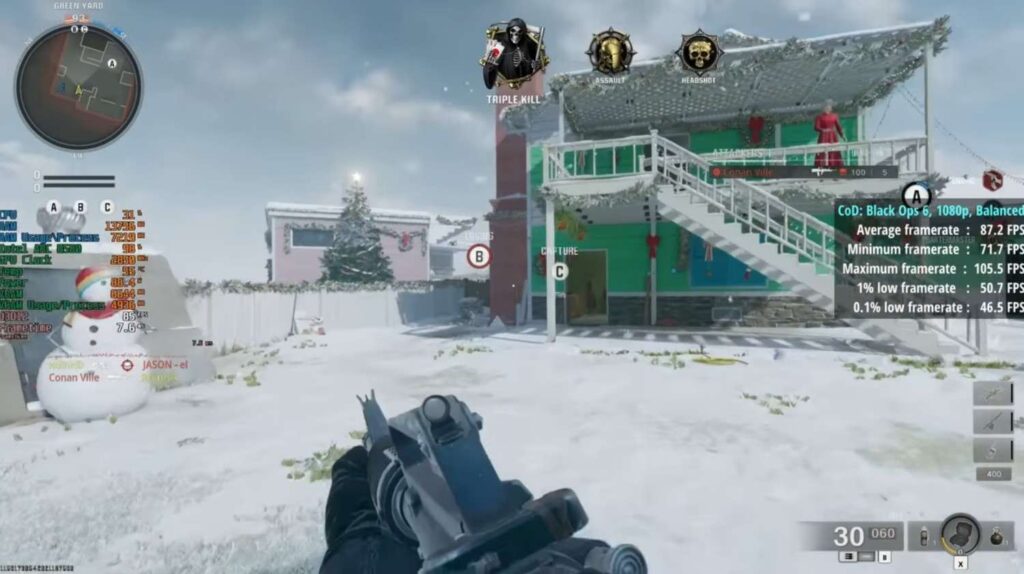
The game ran well at 1080p balanced settings, averaging 87 FPS with a 1% low of 51 and a 0.1% low of 47. The reviewer experienced a glitch with the Xbox store, but this was easily resolved. The reviewer concluded that performance on this card was generally very good.
These detailed breakdowns offer a clearer picture of the Intel Arc B580’s capabilities and limitations in a variety of gaming scenarios.
Key Insights and Observations
Driver Stability
The Arc B580 benefits from significantly improved drivers compared to its predecessors. Titles that previously struggled now run smoothly, making the card a viable choice for gamers.
API Preferences
DX12 consistently outperformed DX11 across most games. Gamers should prioritize DX12-compatible titles to maximize the card’s potential.
VRAM Utilization
The card’s 12GB of VRAM proved invaluable for high settings and modern games, offering an edge over competitors like the NVIDIA 4060.
Cooling and Noise
The Sparkle OC’s triple-fan system kept temperatures and noise levels impressively low, even during demanding sessions.
Performance Consistency
While the Arc B580 excels at 1080p, certain games revealed inconsistencies, such as unexplained clock drops in “Red Dead Redemption 2.”
Potential Drawbacks
- Ray Tracing Performance: While capable, the card struggles with ray tracing in demanding games, often requiring settings to be lowered.
- CPU Bottlenecks: At 1080p, mid-tier CPUs like the i5-12400F occasionally limited performance, emphasizing the importance of pairing the card with a modern processor.
- Upscaling Dependence: Titles like “Black Myth Wukong” and “Stalker 2” needed upscaling to achieve smooth frame rates.
A New Contender Emerges
The Intel Arc B580 Sparkle OC is a bold statement from Intel in the competitive GPU market. With impressive performance at 1080p, improved driver support, and a robust design, it’s a worthy alternative to NVIDIA’s 4060 and AMD’s offerings. However, to unlock its full potential, gamers must pair it with a modern system and leverage features like Resizable BAR.
For those seeking a reliable, future-proof card with ample VRAM and excellent cooling, the Arc B580 is a compelling choice. While it’s not without limitations, ongoing driver updates and optimizations are likely to make this card even better over time. Intel’s entry into the GPU space is more than just a novelty—it’s a sign of a promising future for gamers and creators alike.
